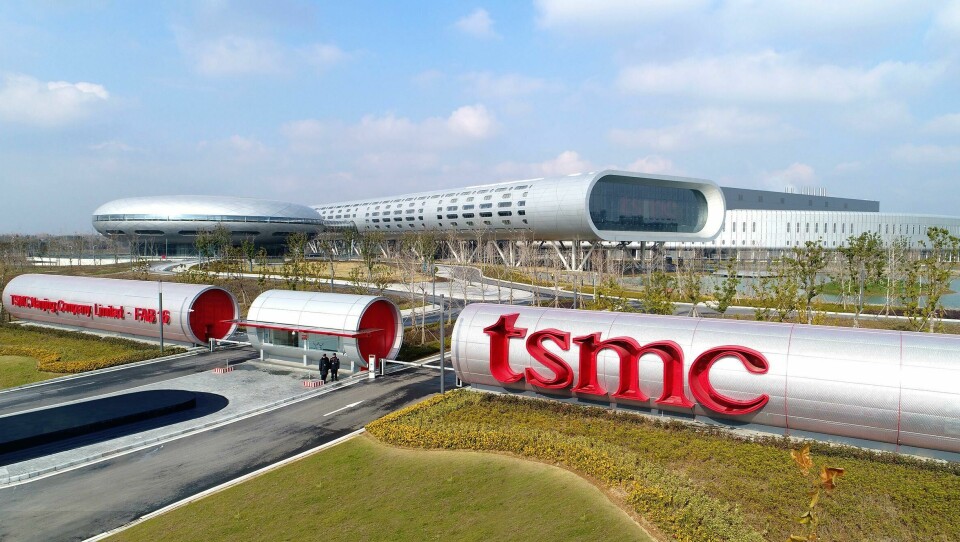Escalation in Taiwan could cause further semiconductor crisis in 2024
The escalation of tensions in Taiwan could cause a further semiconductor shortage in the year ahead, presenting a risk to automotive logistics.

Tensions and regulatory frictions are rising in the run-up to the upcoming presidential election in Taiwan, on January 13. One of the prominent issues in the election race is focused on relations with China, whose president Xi Jinping is focused on the “reunification” of Taiwan with China. The Chinese Communist Party has never ruled Taiwan, but it claims the territory as part of the People’s Republic of China, while an increasing number of the population identify as Taiwanese rather than Chinese.
The growing pressure could lead to Taiwan being a primary conflict hotspot in 2024, according to predictive insights firm Everstream Analytics. In a risk report, Everstream said that additional policies are lined up to limit exports for semiconductors, adding that “any escalation, whether cyberattacks, a naval blockade, military drills, or a full-scale invasion [of Taiwan], would prove devastating to global supply chains”.
Taiwan accounts for 38.9% of the world’s share of semiconductors, worth $138 bn in export value. In an invasion scenario, Everstream said it would cost an estimated $350 billion (£274 billion) over three years to replace Taiwan’s semiconductor capacity.
A further risk highlighted by Everstream is that more commodities and products are getting caught up in heightening trade wars, particularly between the US and China. Growing export controls and sanctions will force companies to search for new technology suppliers to avoid disruptions. These restrictions from the US to China now include export controls on semiconductor production equipment out of the Netherlands and Japan.
As a result, Everstream predicts that investment in semiconductor facilities will shift toward the US this decade, with an estimated $190 bn investment in fabrication plants in the USA by 2030.
Aside from the impact on the automotive industry’s supply of semiconductors, disruption in the Taiwan Strait would impact an estimated half of all the world’s container ships that pass through it, according to Everstream.
The analytics company advised logistics firms to begin preparing strategies that could mitigate the potential effects of disruption in Taiwan, including building up alternative suppliers outside of the region, adjusting levels of buffer inventory and securing air cargo capacity. In the most extreme case of an attempted invasion, Everstream said logistics firms should stockpile critical components and build up alternative suppliers in the region and beyond.

However, the political situation in Taiwan is not the only risk that threatens the automotive logistics and supply chain industry globally in the year ahead.
Cybercrime risk remains high
Everstream Analytics said that the risk of cyberattacks on the industry will remain high in 2024. In its report, Everstream found that cyberattacks on supply chains rose sharply during 2023, up 202% year on year. This is the highest level in the last five years, surpassing the previous record during the Covid-19 pandemic in 2020, and the analytics firm said it is not slowing down.
In 2023, cyberattacks primarily hit the logistics sector, including trucking firms, ocean carriers, rail companies and airlines, accounting for a total 17% of attacks across all industries. The automotive industry accounted for a tenth of all cyberattacks across all sectors and carmakers were not exempt from the impact.
Billion-dollar weather events will disrupt supply chains
Billion-dollar weather events, which the US experienced every four months in the 1980s, are now occurring every three weeks, and Everstream said this impact will increase as the ‘Era of Extremes’ persists in 2024.
Weather events are the top logistics disruptor for supply chains, as could be seen throughout last year when the Panama Canal experienced its worst drought since record began in 1950. The analytics firm predicts that improvement isn’t likely in the first four to five months of the year because of the late December dry season, which is causing draft height restrictions and daily vessel transit limits to worsen. With longer waiting times, bulk carriers, freighters and tankers will be feeling the affects most, and some shipping operators may choose to avoid the Panama Canal entirely as a result. Others will reroute via the Suez Canal, Everstream predicts, but with recent Houthi attacks, container ships and ro-ro operators are now avoiding the Red Sea too.
In response to the drought affecting the Panama Canal, Mexico’s government is reviving the trans-isthmus railway between the Gulf of Mexico and the Pacific Ocean as an alternative for container traffic. The interoceanic railway is planned to run for 303 km, with the main line set to go between ports at Salina Cruz, Oaxaca and Coatzacoalcos, Veracruz. President López Obrador, who said he plans to have the project running by next September, opened the first section of the railway (known as Line Z) in late December.
On top of droughts, winter storms are also expected to worsen and affect the automotive logistics industry this year. With global ocean temperatures at record highs and a rising trend in disruptive winter weather, there is a greater risk of more impactful storms.
To minimise the impacts of droughts, storms and floods, logistics firms should closely monitor routes for approaching disruption, leveraging predictive weather forecasts and disruptions alerts along with predictive ETAs.





